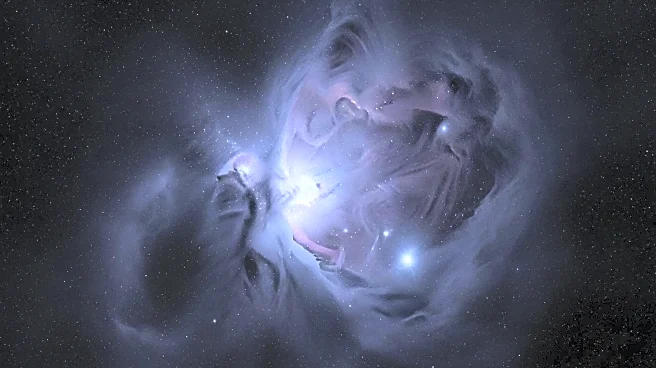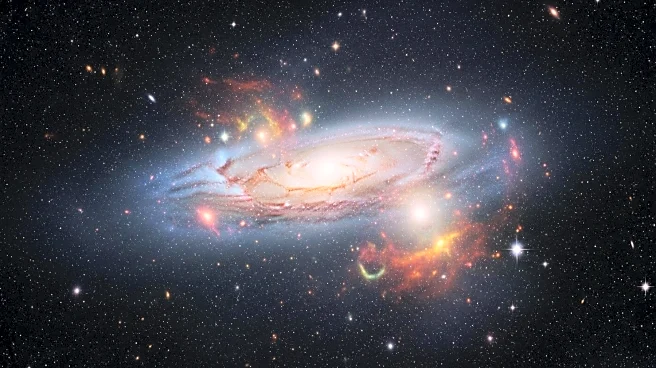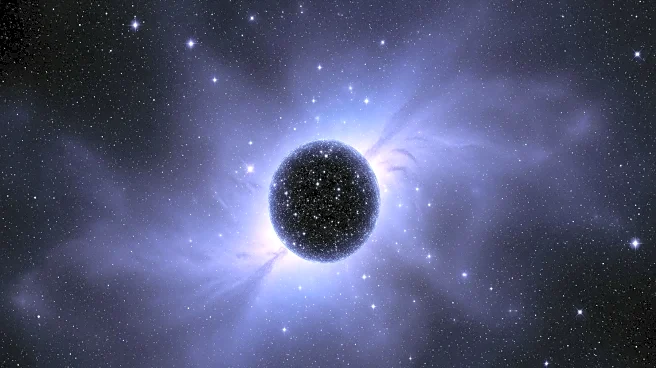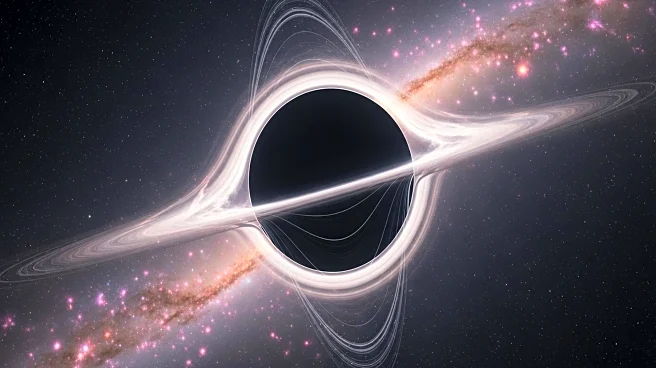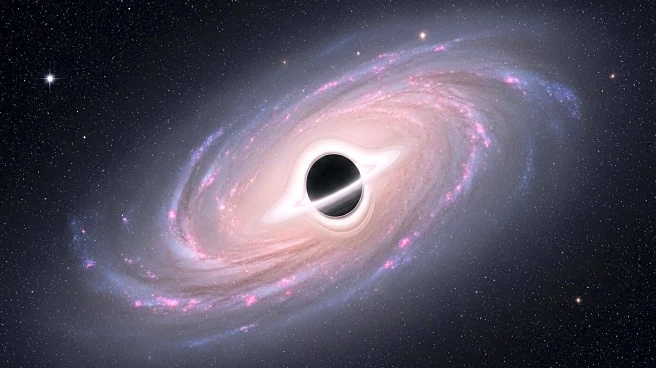What's Happening?
Astronomers have potentially identified the smallest clump of pure dark matter ever found, located 10 billion light-years away. The discovery was made while observing an Einstein ring, a form of gravitational lensing caused by a massive elliptical galaxy. The team, led by John McKean and Devon Powell, used radio telescopes to detect a notch in the arc of radio emission, suggesting the presence of a dark object with a mass a million times greater than the sun. This finding supports the cold dark matter theory, which posits that dark matter is composed of low-energy particles that can clump together.
Why It's Important?
The discovery of a small clump of dark matter provides valuable insights into the nature and properties of dark matter particles. Understanding the size and behavior of dark matter clumps can help refine models of galaxy formation and the universe's structure. This research contributes to the ongoing quest to identify the composition of dark matter, a fundamental component of the universe that remains largely mysterious.
What's Next?
Astronomers will continue to search for more dark matter clumps to validate the cold dark matter theory and refine their models. Further observations and analyses may reveal additional details about the properties of dark matter particles and their role in cosmic evolution. The findings could lead to new breakthroughs in understanding the universe's fundamental forces and components.


